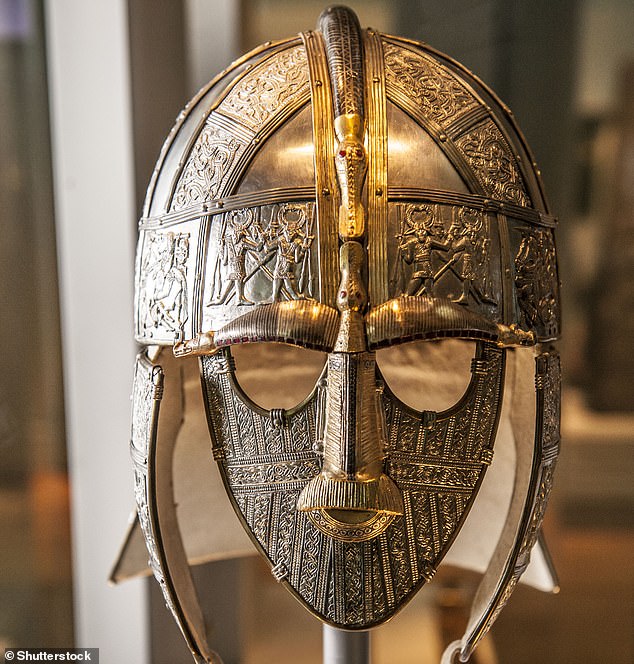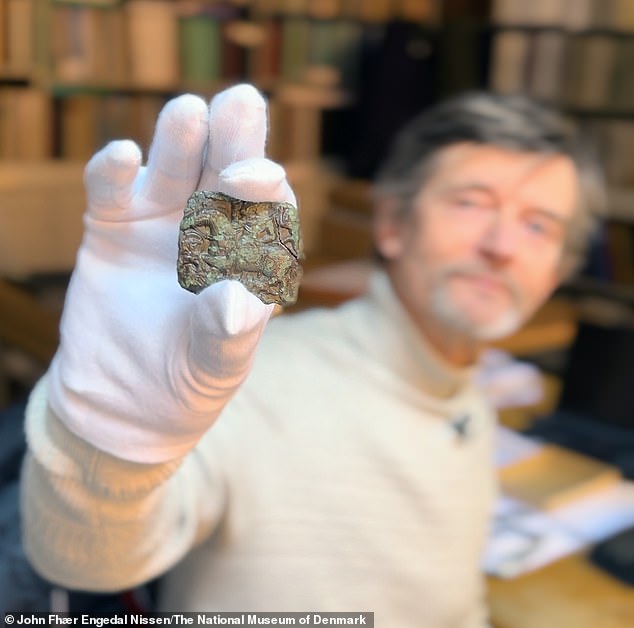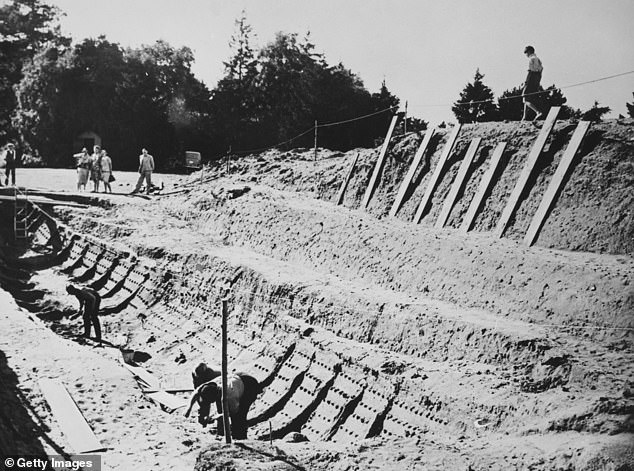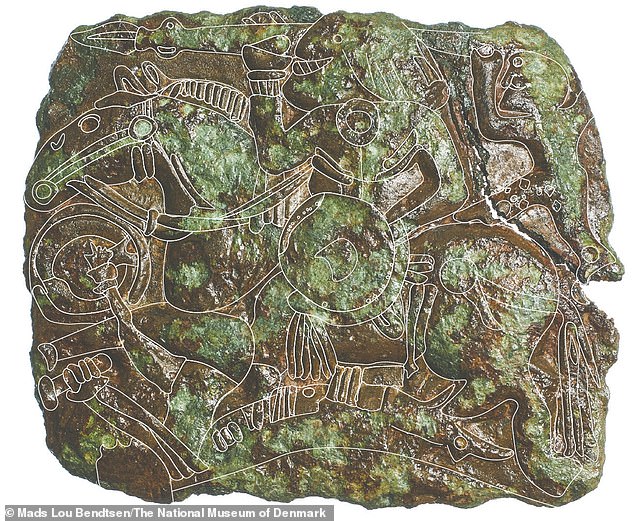Featured
- Get link
- X
- Other Apps
Unveiling the Real Birthplace of the Sutton Hoo Helmet: Iconic Headgear's Surprising Origin
- READ MORE: Were the people laid to rest at Sutton Hoo really royals?
For nearly a hundred years, the Sutton Hoo burial site has provided an intriguing look into Britain’s early past.
Among the astounding treasures discovered at the site, the most remarkable item is undoubtedly the Sutton Hoo helmet. regarded as one of the most valuable assets of the Anglo-Saxon era .
Up until this point, archaeologists thought that the helmet had arrived in Britain from Sweden as a diplomatic gift or heirloom.
However, a recent find by an amateur metal detectorist has raised questions about the helmet’s provenance — potentially altering our understanding of early European history.
Of the many decorations on the shattered helmet - made sometime in the 7th century - are two small panels which show warriors riding on horseback.
According to an analysis by the National Museum of Denmark, those panels bear a striking resemblance to a small metal stamp found on the Danish island of Taasinge.
This raises the tantalising possibility that it hailed from Denmark, and not Sweden.
Peter Pentz, a curator at the National Museum of Denmark, stated to the Ritzau news agency, "Given the striking similarity evident in this case, it suggests that these pieces might have been created not just in the same location but potentially by the very same artisans."


The renowned helmet found at Sutton Hoo had disintegrated into numerous fragments, yet archaeologists managed to reconstruct it, uncovering elaborate designs and embellishments.
This includes an image of a mounted warrior charging over a fallen opponent.
Up until now, archaeologists thought this design was inspired by previous Roman aesthetics and might have originated in Uppland, eastern Sweden, as comparable warrior designs were discovered on helmets there.
Nevertheless, experts from the National Museum claim they have found an artifact that casts doubt on that narrative.
Local archaeologist Jan Hjort was scouring the fields of Taasinge in 2023 when he discovered a small, flat metal object just four centimetres by five centimetres.
Following the submission of the artifact to the nearby museum, it was identified as a specific kind of seal or mold referred to as a 'patrice'.
Metal sheets could be positioned above the form and hammered to emboss the pattern onto them.
In this particular instance, the design features a man astride a horse trampling upon a fallen figure. Experts suggest that this design closely resembles the one from Sutton Hoo more so than the Swedish variations do.


The researchers highlight features such as the lines under the horseman's foot and those at the edge of the prone man's foot, noting these elements appear identical in both the Patey and Sutton Hoo helmet pieces.
Although Mr. Pentz recognizes that the themes might have been influenced by each other, he contends that such high degrees of resemblance cannot simply be written off as mere copying.
A number of historians think that the island of Taasinge might have hosted a metalworking site in the seventh century. Thin metal plates discovered in this region could potentially have served as stamping foils.
"That might offer compelling proof that the Sutton Hoo helmet was indeed crafted in Taasinge, making this discovery truly remarkable," states Mr. Penz.
Nevertheless, there are multiple problems hindering this theory—primarily because the Sutton Hoo helmet is fragmented and shows considerable wear.
Moreover, the Taasinge seal ring is made of such tiny metal pieces that it might have been readily transported from another location.
However, if the Sutton Hoo helmet truly originated from Denmark instead of Sweden, it would challenge historians' understanding of the distribution of power in seventh-century Europe.
The study indicates that Sweden and England might have served as outposts for a Danish center of power, with the helmet indicating significant ties to Denmark being the dominant force in the area.


Mr. Pentz states: "It is not yet time to reach any conclusions, however, it suggests that Denmark had a more significant part during this era than what was earlier believed."
We frequently credit the unification of the kingdom to Harald Bluetooth during the 10th century; however, Denmark might have achieved relative unity and strength as far back as 600 CE. This discovery challenges earlier hypotheses, which makes it particularly intriguing.
But not everyone is convinced that this find is as revolutionary as the National Museum of Denmark suggests.
Dr Helen Gittos, a medieval historian from the University of Oxford, told MailOnline that the stamp was an 'interesting find' but that the motif was far from unique.
Dr Gittos says: 'The imagery fits with similar examples found in Valsgarde, Sweden, as well as in southern Germany and elsewhere.
'It’s always particularly helpful to find evidence for metalworking activity and it adds to the sense of quite how interconnected were the military elites of this period in north-western Europe.'
The Sutton Hoo ship burial dates to between around AD 610 and AD 635, when the site belonged to the Anglo-Saxon kingdom of East Anglia.
It was back in 1939 that amateur archaeologist Basil Brown discovered the site, when he brushed away the Suffolk soil on request of local woman Edith Pretty.

He discovered proof of a massive funerary structure — an 88.6-foot-long vessel containing a chamber filled with luxurious items.
Over 1,300 years, the acidic soil caused the ship's wood to decay completely, leaving behind merely a spectral outline.
Subsequent examination revealed the presence of phosphates in the soil — a sign that a human body had previously been buried there.
The alkaline conditions caused corrosion to the human bones, indicating that their identities may remain unknown forever.
Those interred here did not leave behind any written accounts, making it difficult to ascertain their precise identities. However, historians have often maintained that Sutton Hoo served as the burial ground for the ruling family of East Anglia—the Wuffingas dynasty.
As the saying goes, a king or renowned warrior from East Anglia was buried alongside his riches—King Rædwald being one possible candidate, as per the National Trust.
The individual's regal standing is evidenced by the discovery of over 260 artifacts interred with them.
These items consist of objects such as a shield and drinking horns linked to Scandinavia, along with the famous Sutton Hoo helmet.
Read more- Get link
- X
- Other Apps
Popular Posts
ABC Apologizes After Claudia Long Fabricates False Claims About Two High-Profile Politicians
- Get link
- X
- Other Apps
Tokyo Stocks Dip as Wall Street Suffers Losses
- Get link
- X
- Other Apps
Comments
Post a Comment